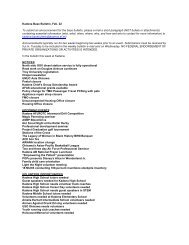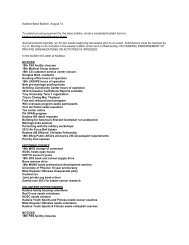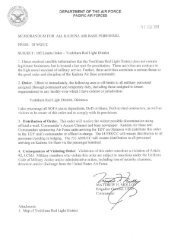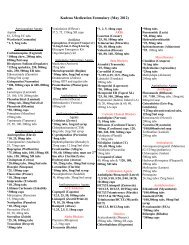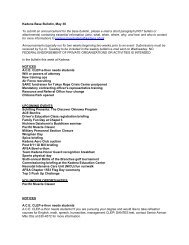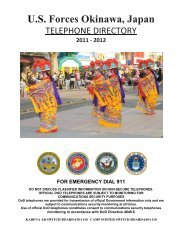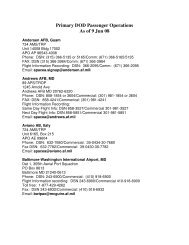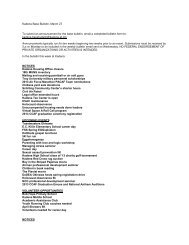JP 3-52, Joint Airspace Control - Defense Technical Information ...
JP 3-52, Joint Airspace Control - Defense Technical Information ...
JP 3-52, Joint Airspace Control - Defense Technical Information ...
You also want an ePaper? Increase the reach of your titles
YUMPU automatically turns print PDFs into web optimized ePapers that Google loves.
<strong>Airspace</strong> <strong>Control</strong> Planning Considerations(e) Entry and exit routes and procedures into and out of the HIDACZ andto the target area.(f) Air traffic advisory as required. Procedures and systems must also beconsidered for ATC service during instrument meteorological conditions.(g) Location of enemy forces inside and in close proximity to the HIDACZ.(h) At a minimum, the HIDACZ should cover the ATF sea echelon areasand extend inland to the landing force’s FSCL. Additionally, the HIDACZ should belarge enough to accommodate the flow of fixed-wing aircraft into and out of theamphibious airspace.(3) Under the ATF, the Navy tactical air control center is normally the agencyresponsible for controlling all air operations within the allocated airspace regardless ofmission or origin, to include supporting arms. An airborne element or surface combatantwith the requisite air C2 capabilities may also serve this function. Regardless of whereactual airspace control is exercised, close and continuous coordination between airspacecontrol and air defense agencies is essential in any amphibious operation. Emphasis willbe placed on simple, flexible ATC plans and a combination of positive and proceduralairspace control. Most amphibious operations will take place in a radar environment,allowing for increased control over air missions. Amphibious forces operating in a nonradarenvironment will rely exclusively on procedural control. Amphibious air controlplans employ a combination of positive and procedural control methods.For further details on airspace control in amphibious operations, refer to <strong>JP</strong> 3-02,Amphibious Operations.c. Considerations need to be made for aircraft based outside the AO. There is agood probability that aircraft will have to transit carrier control zones. Corridors can bepreplanned, limiting impact on carrier operations. Corridors should be planned tominimize aircraft flight time/fuel requirements.13. High-Density <strong>Airspace</strong> <strong>Control</strong> Zone Integration with Other <strong>Airspace</strong>Coordinating MeasuresIn some cases, the operational environment may require an airspace/fires densitylevel that exceeds the capability of a single HIDACZ controlling authority. One methodto prevent overloading the controlling authority is to establish another ACM (restrictedoperations area, HIDACZ, etc.) above or adjacent to the HIDACZ, controlled by anotheragency or component.For more information on HIDACZ, see FM 3-<strong>52</strong>.1/Air Force Tactics, Techniques, andProcedures (AFTTP) 3-2.78, Multi-Service Tactics, Techniques, and Procedures for<strong>Airspace</strong> <strong>Control</strong>.III-13



